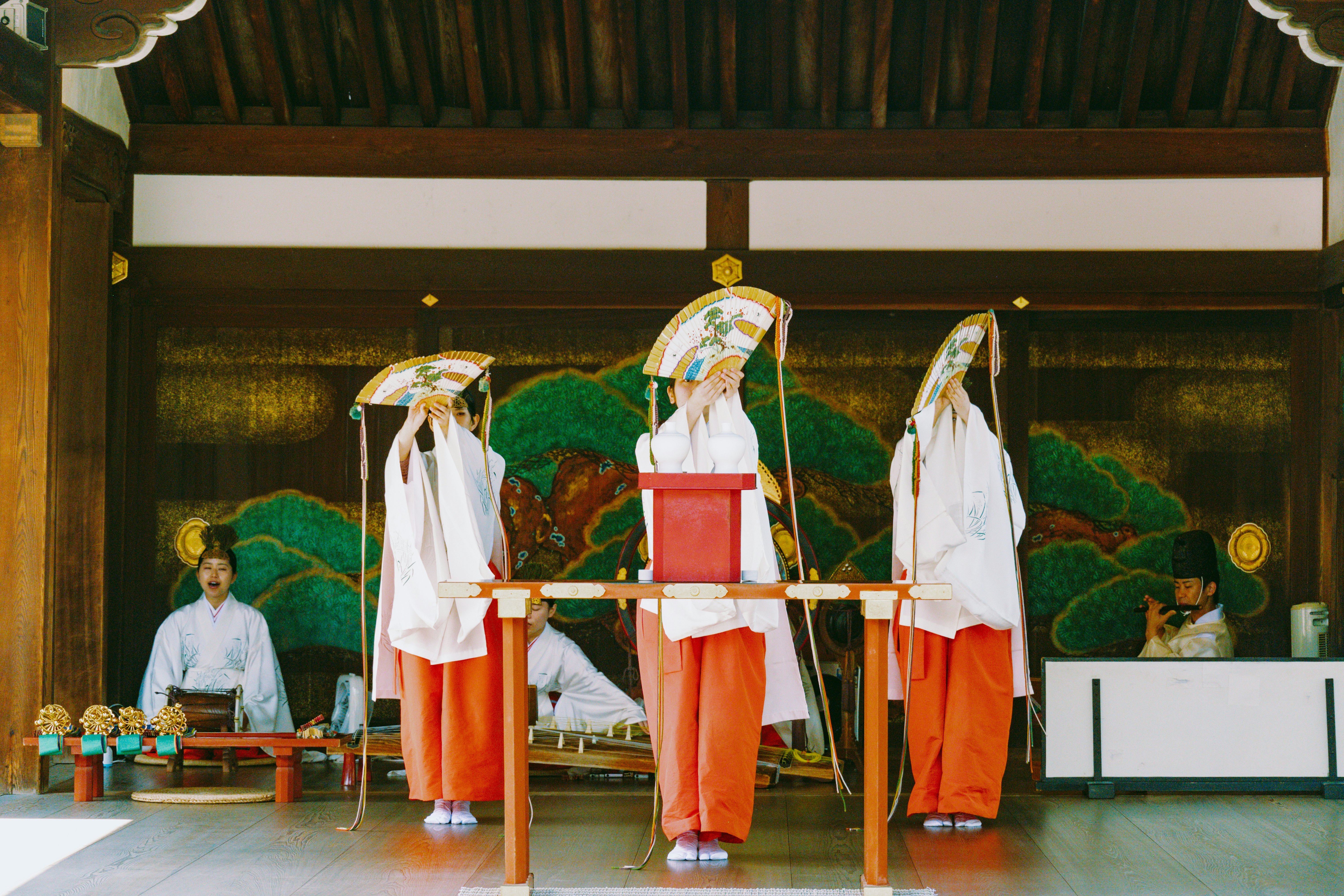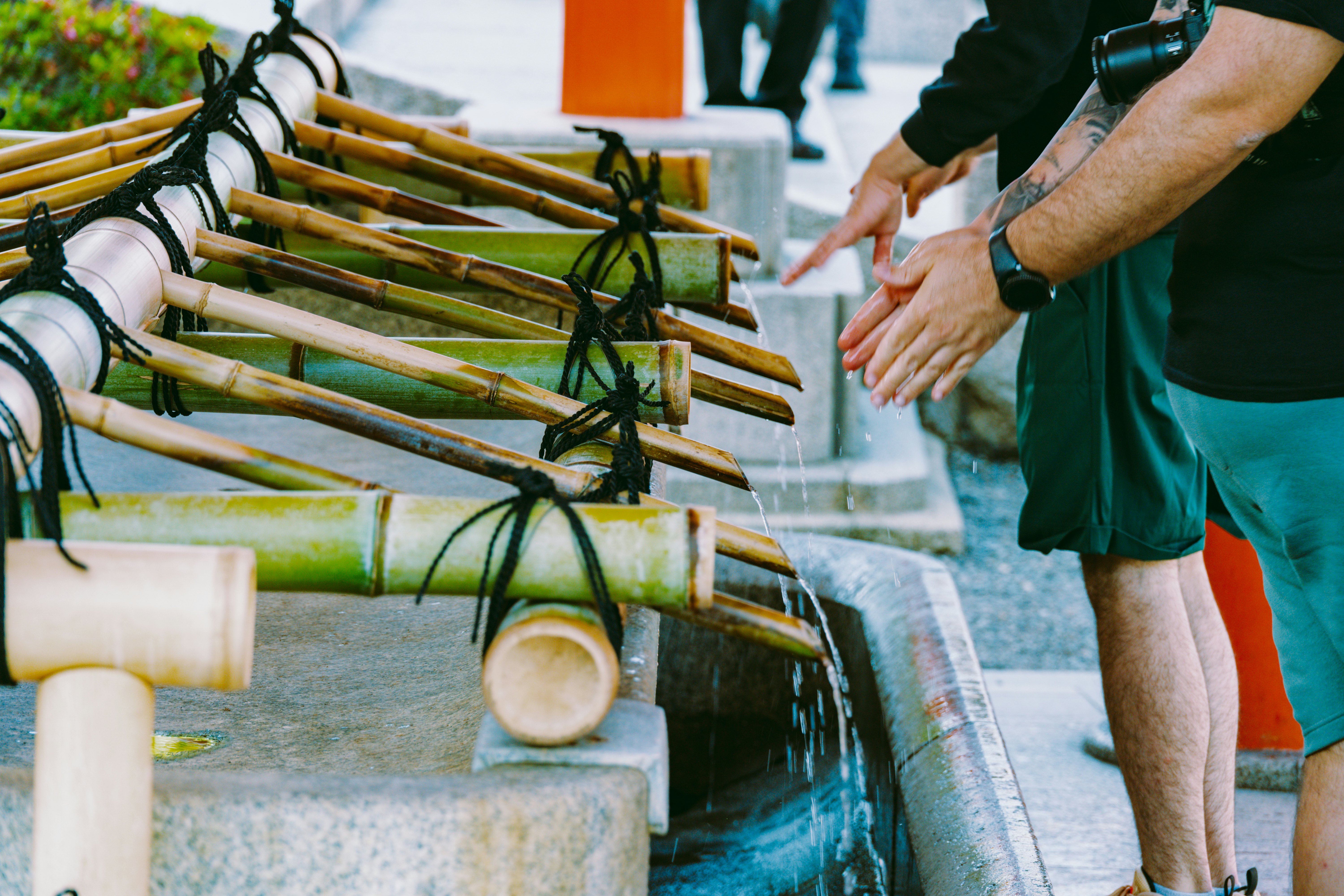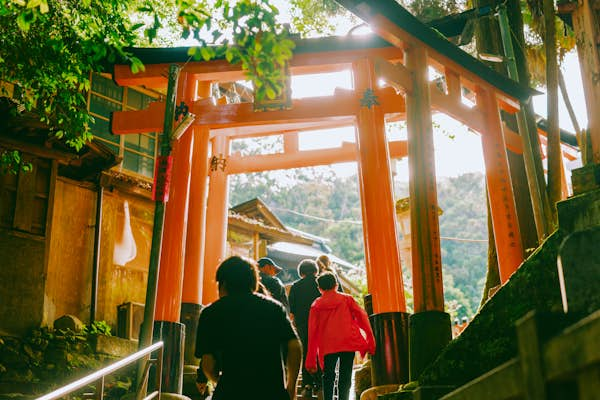Japan is home to an estimated 80,000 shrines dedicated to the kami – nature spirits – of Shintō, the country’s indigenous folk religion. None are bigger, more famous or more memorable than Fushimi Inari, a complex of shrines and walking trails that sprawls up a mountainside in the east of Kyoto. No doubt you have seen pictures of the avenues between the shrines, lined with 10,000 vermillion torii (shrine gates), which are a huge hit on social media. There’s nothing like being there in person, though. The forested mountain paths, chattering of monkeys and wild boar, and smell of agarwood cloaking the incense-wreathed shrines all add up to make Fushimi Inari one of the most atmospheric places in Japan.
Dating back to the 8th century CE, Fushimi Inari radiates an atmosphere of deep time and is a symbol of the classical Japanese culture for which Kyoto is famous. It’s so well maintained, though, that it almost feels like it could have been built yesterday. Inari, the kami (Shintō god) to whom the shrine is dedicated is the patron of business and trade, so successful merchants and entrepreneurs continue to pay for the upkeep of the torii and the construction of new ones – making this not only an ancient place, but one that is still growing and feels alive.
Advertisement

When should I go to Fushimi Inari?
Although Fushimi Inari is open 24 hours a day, seven days a week, there are some things worth bearing in mind. Peak times at the shrine are 9am–6pm, so getting there before or after these times usually means smaller crowds, with the beautiful light of sunrise and sunset adding extra atmosphere. Be wary, though, of walking on mountain paths in the darkness because most of the loop is not lit, particularly once you get away from the busiest tourist areas.
The temperate shoulder seasons of spring and fall are the best times to visit weather-wise, but keep in mind that sakura (cherry blossom) season in March and April is a major draw for tourists and Fushimi Inari (like Kyoto in general) is extremely busy during this time.
How much time should I spend at Fushimi Inari?
The walk along the main path, from the base of the mountain to the summit and back again, takes between two and three hours. However, the main shrine sits at the foot of the mountain, close to the complex entrance, and many tourists choose to visit just the main building or take a short walk along the main torii avenues and back. On the other hand, with multiple paths winding their way through thousands of gates and dozens of smaller shrines, you have endless route variations to choose from, and it’s possible to spend half a day or even longer here.
Do I need to book a ticket?
Fushimi Inari is free to enter and open to the public 24 hours a day, every day of the year, so there’s no need to book a ticket. In fact, it’s not even possible.
Advertisement

How do I get there?
Fushimi Inari is easy to access via Kyoto’s fantastic train network. Take the JR Nara Line to JR Inari Station – just a five-minute ride from Kyoto Station – and find the entrance just outside the station. Alternatively, Fushimi Inari Station connects to Kyoto Station on the Keihan Main Line in about nine minutes, and is an 800m walk from the main shrine entrance.
Is Fushimi Inari accessible?
For travelers who use wheelchairs, Fushimi Inari is partially accessible. JR Inari and Fushimi Inari train stations are both fully wheelchair-accessible, and there are ramps leading up to the main shrine. The two main torii avenues are also wheelchair accessible. The smaller mountain paths beyond this point, however, incorporate lots of stairs.
Where should I eat and drink near Fushimi Inari?
There are a few restaurants and cafés within the shrine complex, which you’ll spot as you follow the mountain paths. Many of them have scenic locations and names and dishes that reflect the focus of the shrine. Vermillion Café overlooks a tree-lined pond and serves brunch dishes incorporating fried tofu, which is held to be a favorite food of foxes. Itsukichaya Fushimiinari, meanwhile, serves lavish multi-course kaiseki (Japanese haute cuisine, which obeys strict rules of etiquette for every detail of the meal). It’s best to make a reservation if you’d like to eat here.

What are the must-sees?
The entrance
The first thing you’ll see when you get to Fushimi Inari is a huge torii gate, a symbolic marker of the threshold between the profane world outside and the sacred space of the shrine. Tradition dictates that you should bow before passing through the gate, and (if the crowds allow), walk through it on either the right or left side of the path – the center of the path is reserved for the kami (Shintō deities) themselves.
Behind this torii is another, more elaborate gate, known as a romōn – more of a building-type structure, with a two-story pavillion roof. It was built in 1589 by local regent Toyotomi Hideyoshi, in the hope that Inari would be pleased with his donation and would help his sick mother. It seemed to work, and so began the tradition of people building gates here in hopes of good favor.

The shrines
Behind the romōn is the main hall, where etiquette dictates you pay respect to Inari. Before you enter, though, follow the traditional rituals of temizu – wash your hands using a wooden ladle and water trough and then scoop some water into your mouth using your left hand. Next, approach the shrine and ring the bell, drop some coins into the donation box and then bow twice, clap twice, and bow again. You’ve now got Inari’s attention!
As you explore the mountain, you’ll find dozens of auxiliary shrines, less grand – but also less busy – than the main shrine. Some of them seem forgotten by time: hewn from stone, covered in moss and guarded by wary fox statues. These atmospheric pockets of peace are your reward for venturing beyond the main shrine and exploring the mountain.
Fox statues
Inside and outside the shrine, you’ll notice many statues of foxes – so many, in fact, that you’d be forgiven for thinking these are a representation of Inari. You’d be wrong, however. These are kitsune, the messengers of Inari: trickster fox figures who are prominent in Japanese folklore, often depicted as shifting form and bewitching people. Inari and the other kami are not directly depicted at shrines, and do not even have a set form – they are considered more like forces of nature. Inari is variously depicted as male and female, often either a young woman or an old man. Instead of a statue of Inari, you’ll notice that the main shrine has a circular mirror on the altar. This is a common feature of Shintō shrines, representing the divinity within ourselves.
The torii avenues
Behind the main shrine, there are two adjacent paths that run beneath densely packed rows of vermillion torii gates. The reason there are so many torii here is because it’s believed that donating one brings spiritual merit that translates into good luck in business – so the gates are inscribed, in kanji characters, with names of donors and their companies.
Pick one of the paths, and you’ll find yourself inside a mass photo shoot, with visitors snapping pictures for social media. Walk a little further, though, and the ocean of selfie-sticks will soon dissipate, giving way to quiet woodland paths (keep an eye out for monkeys) and those many atmospheric smaller shrines, which will reward you for lingering and venturing off the beaten path.

